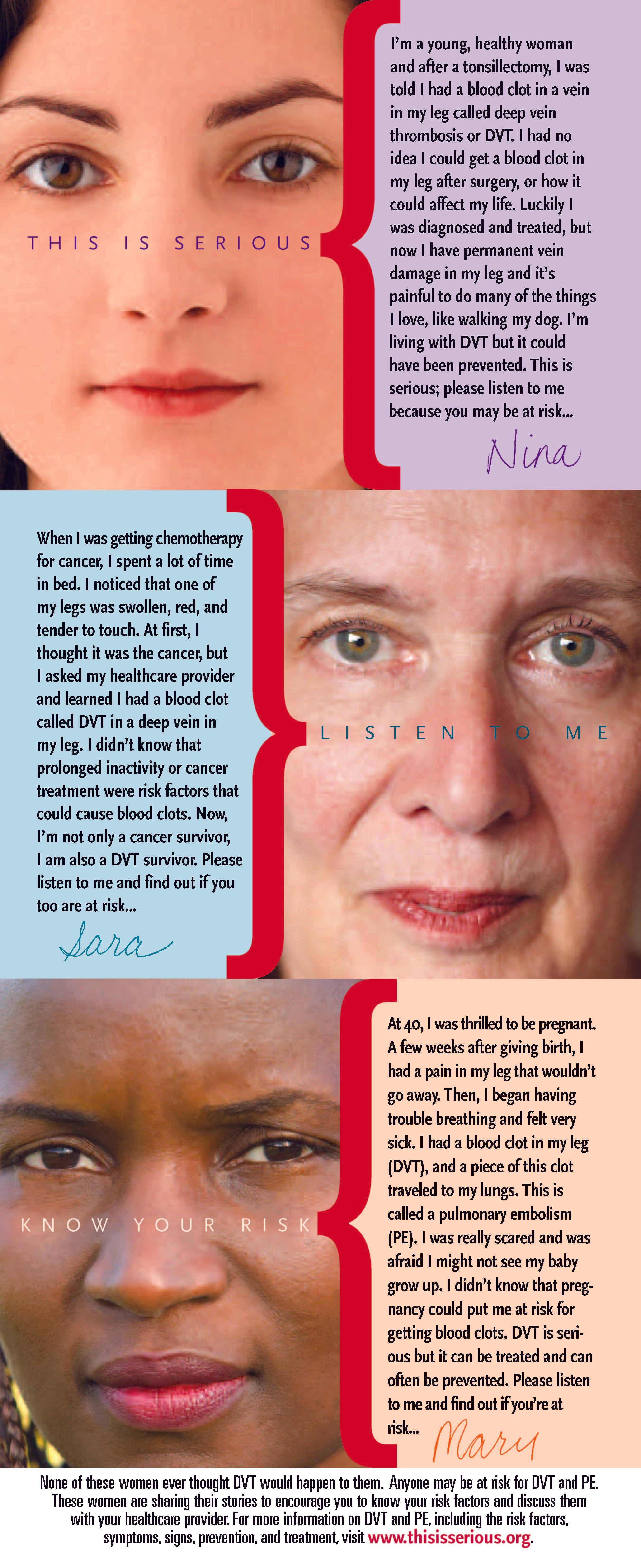What is Deep Vein Thrombosis (DVT)

What is Deep Vein Thrombosis (DVT) & Pulmonary Embolism (PE)
Deep vein thrombosis (DVT) occurs when a blood clot (thrombus) forms in one or more of the deep veins in your body, usually in your legs. Deep vein thrombosis can cause leg pain or swelling, but may occur without any symptoms. DVT CAN IMPACT ANYONE and can result from certain medical conditions that affect how your blood clots, frequent travelers with hendered blood flow in their legs, people who don't move for a long time, such as after surgery, following an accident, or when they are confined to a hospital or nursing home bed. Being overweight, smoking, or being pregnant also increases your risk of developing a blood clot.
Deep vein thrombosis is a serious condition because blood clots in your veins can break loose, travel through your bloodstream and lodge in your lungs, blocking blood flow (Pulmonary Embolism).
How Can I Protect Myself from DVT?
Leg exercises — Simple ankle rolls or wiggling of the toes keeps the blood flowing. It helps prevent it from pooling and stops clots from forming.
-
Walking — Just like leg exercises, walking gets the blood moving. If you’re on a long plane ride take a walk to the bathroom, or if it’s a car ride, stop in a rest area every few hours too to get out and move around.
-
Avoid immobility — If you sit at a desk everyday at work, get up every hour or two and go for a two minute walk around the office.
-
Hydration — Dehydration increases your chances of developing blood clots. Remember, 8 glasses of water per day!
-
“Blood thinners” — Your doctor may prescribe anticoagulant medications (warfarin/Coumadin, Lovenox) if you have had a clot before or are going to be in a situation (such as post-surgery) where you may be at increased risk.
-
Compression stockings/TEDs — These look like nylons/knee socks and keep the blood moving. They may feel tight and some people dislike this, but they are so important and they work!
-
Sequential compression devices — Mechanical devices that inflate and deflate at certain time intervals to keep blood flowing adequately. They are often used in hospitals during surgery and for a short time afterwards. Lots of people compare the feeling of them to a blood pressure cuff inflating.
-
Inferior vena cava filters — These are special filters (that resemble little umbrellas) that are used in some people who have been diagnosed with a DVT. They stop any pieces of the clot that may break off from migrating up to the heart, lungs, or brain.
-
Be cautious if you have risk factors — If you have any risk factors, take these simple steps (especially #1-4, which you can do without a doctor) to reduce your chances of developing a blood clot. Also, talk to you doctor about other methods to protect yourself or a loved one.
-
If you have any suspected signs and symptoms of a DVT, seek medical attention immediately. If you know that you have a DVT, and experience difficulty breathing or any other signs of a PE, call 911 immediately.
Resources:
www.cdc.gov, www.mayoclinic.org, www.dvtaware.net
